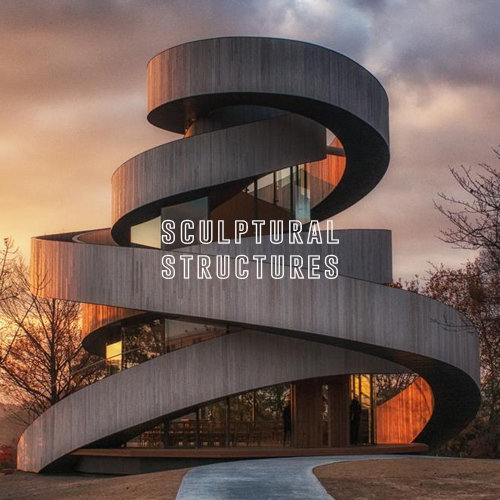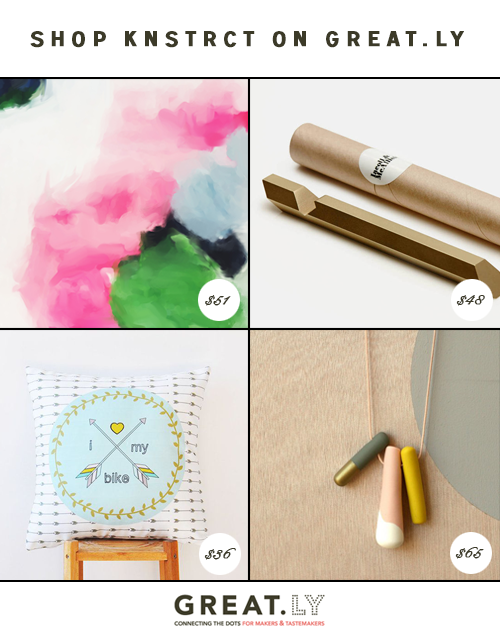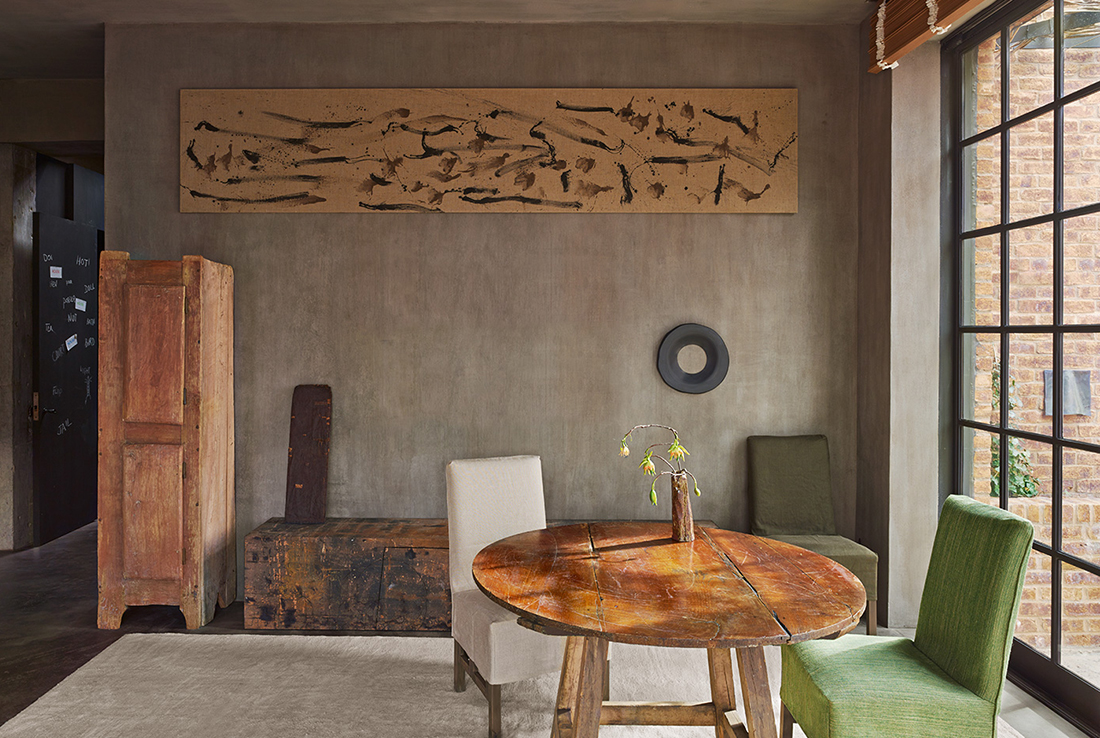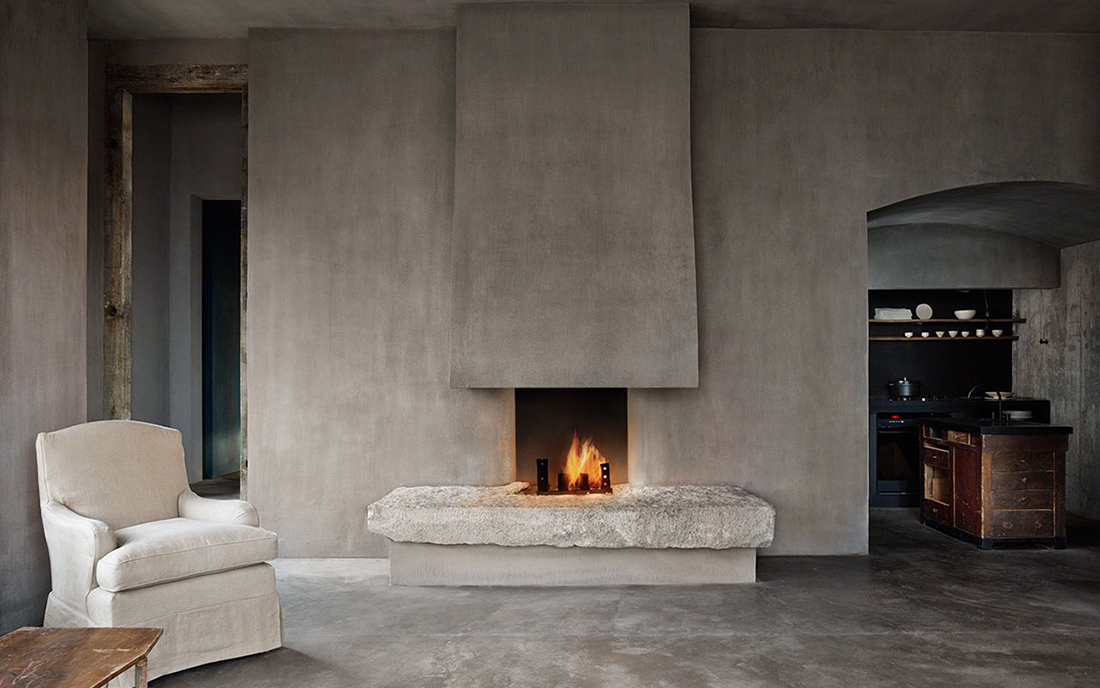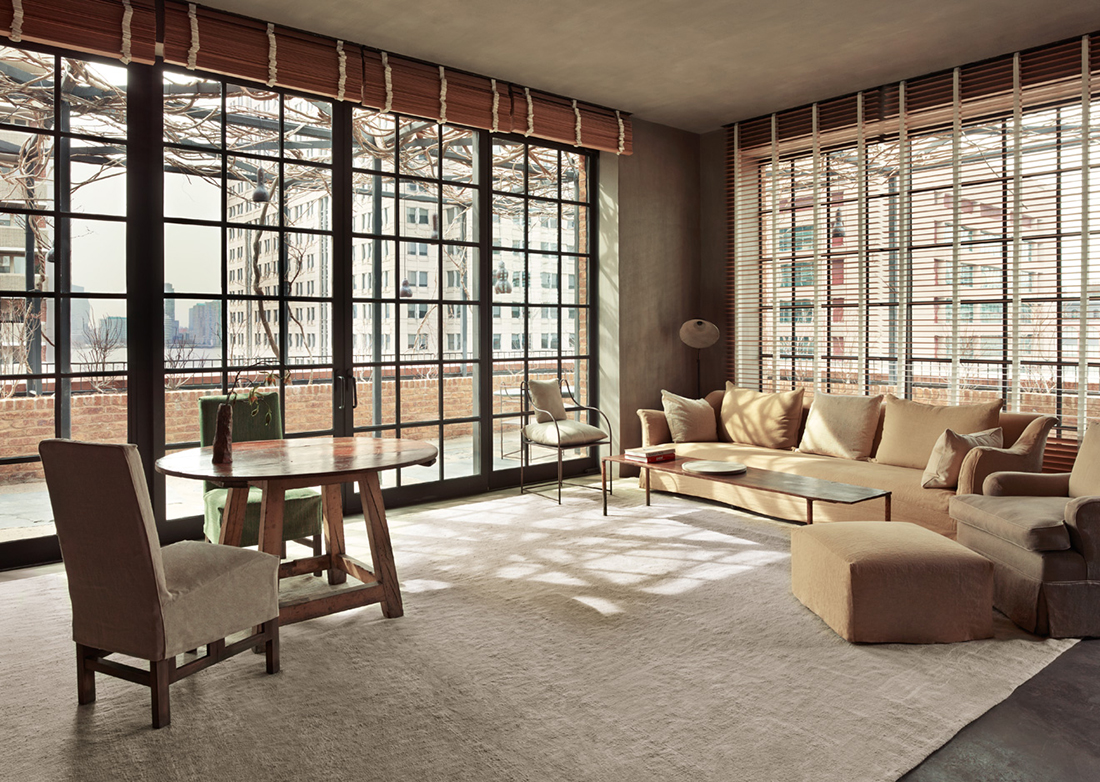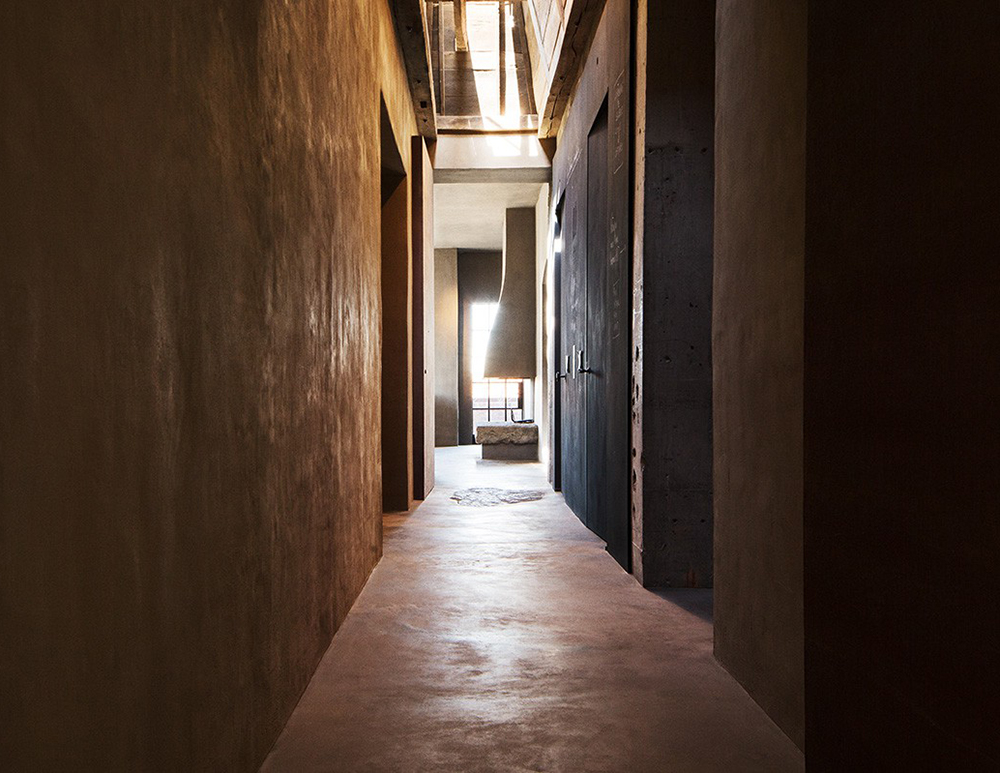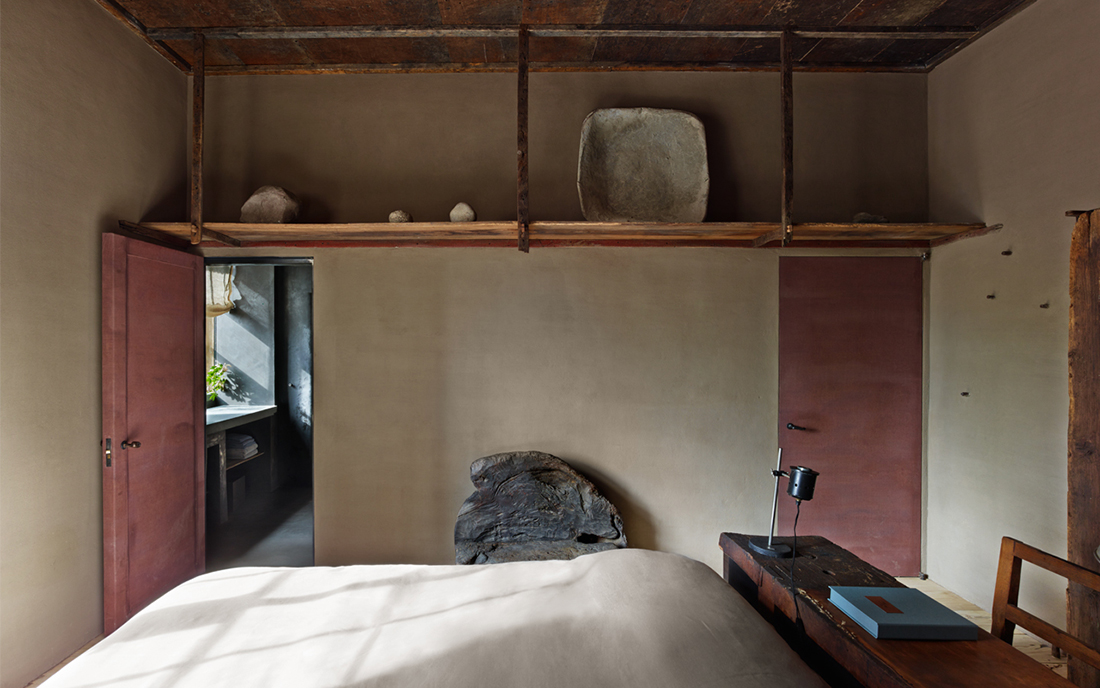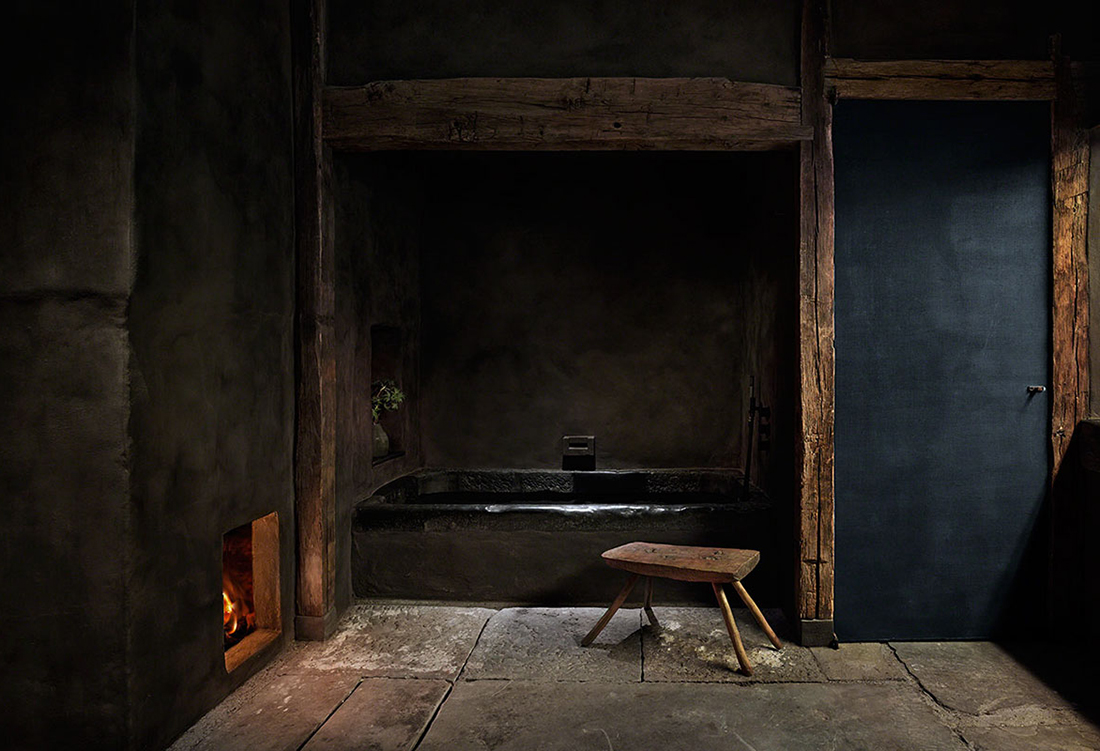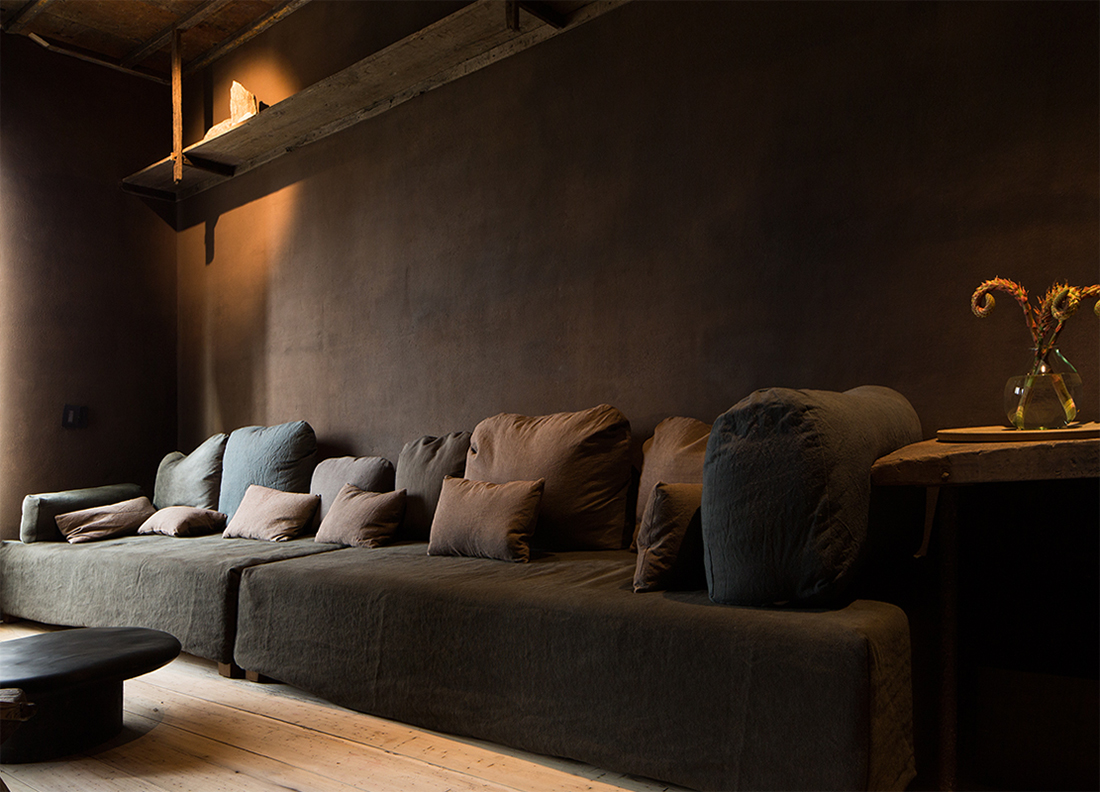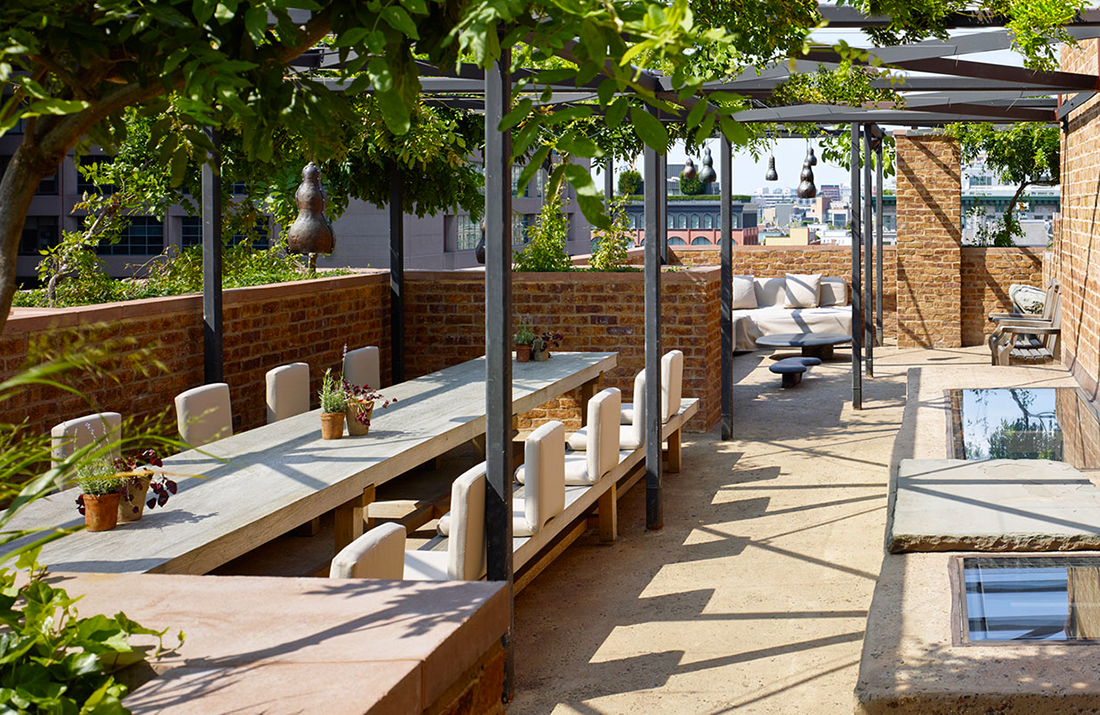Past, Present & Future: The TriBeCa Penthouses at The Greenwich Hotel
/The TriBeCa Penthouses are the result of a truly killer collaboration. The hotel’s partners Ira Drukier and Robert De Niro sat down with Belgian designer Axel Vervoordt and Japanese architect Tatsuro Miki, in what can only be imagined as an incredibly intense and artistically explosive meeting with a suitably epic soundtrack to tackle the transformation. This cinematic image may be almost entirely due to de Niro’s presence, but the 6,800 sq ft suite has taken on a somewhat film-set feel as the fusion of TriBeCa’s industrial past with ancient Japanese aesthetics pervades the design.
The philosophical beliefs of Wabi can be found throughout the space, as appreciation for beauty found in imperfection and authenticity abounds. What we see is a strong presence of stone, wood and earth tones, as furniture, flooring and finishes appear in their natural forms. Here we see Artempo – where time becomes art, and materials that we would often disregard as things to be cut, remodeled and reworked are valued in their original state for their richness of spirit.
Taking a tour through the space, there is a rawness, and purity that makes you feel safe, secure and at one with nature in a way that would otherwise seem impossible in the city. There is a certain level of craftsmanship that operates in direct opposition to modern perceptions of what a penthouse “should” be; an all-white, un-lived-in, picture-perfect, blindingly bright laboratory. However, here we see sustainability, thoughtfulness and echoes of nature that make you feel like Pocahontas would really love this environmentally friendly penthouse, and if we had never invented machines, synthetics and white paint, this is what a luxurious home “should” actually look like.
Each room has character, personality and depth. Each room invites you to sit, open a book, write a book, and spend hours pondering the perplexities of the universe. Here there is no time for Keeping up with the Kardashians. Here there is only time for embroidery and the consumption of fine wine. There’s even a Drawing Room and Living Room with views onto the lower terrace gardens should you feel the temptation to don Austen-esque garb and swoon onto a handsome passer-by or two.
Novelty aside, the attention to detail is astounding, and the unexpected Japanese features are what bring these spaces hurtling back into the 21st Century. Among the custom stone slab fireplaces (there are several), you can find original ceramics and vases designed by Japanese artisan, Shiro Tsujimura and commissioned artwork by Axel Vervoordt and Tatsuro Miki.
The bedrooms are the perfect combination of homely and stately, with grand structures of wood and stone creating a soothing cavern of safety. Deep, rich tones and the thick weight of furniture that was not built out of a box is unexpected, welcoming and rewarding. You feel like you’ve just travelled a thousand miles to get there, should kick off your mud-encrusted boots and the door and collapse in a heap onto the heavy bed and sleep for a million years.
Surely the surly maid will come to unpack your trunk of garments into the walk-in closet before lighting the fire (fireplace number two) before waking you in the morning by opening the glass doors that look out onto those glorious terrace gardens. Then you’ll climb, bleary eyed into the custom bathtub where you can shut out the world for a deep soak, cradled in your 17th Century stone water bassinette. Should you fancy cooking yourself up some breakfast after your fingers have been truly pruned, there is a full chef’s kitchen in which to explore your culinary skills.
As for this terrace that you’re going to spend hours gazing onto, it stretches a lusciously private 4,000 sq ft with multiple levels, gardens, pergolas, seating, dining areas (for up to 18 guests) , a spa pool another fireplace and a costume station for the proper execution of all fictional fantasies. OK - the last part isn’t real, but the rest is. Lanterns, leafy lounge areas and sun-kissed grandeur await for daytime luxurious endeavors, Madame.
Every slab of stone, plank of wood and bronze door handle (all of which have been shaped from clay molds of Axel Vervoordt’s hand in different positions) has been thoughtfully chosen and worked into the space. The fire grate is made of steelwork from the original structure of the Louvre, the ceiling is lined with wood from the Union Square Farmers Market and even the original copper roof of the building was repurposed by an upstate New York artisan.
These penthouses have the capacity to transport you to a more simple time that is inherently TriBeCa, that pays homage to the heritage of this neighborhood and that belongs to its past, present and future.
Photography courtesy of The Greenwich Hotel


